Black raspberry wine is easy to make at home, and doesn’t require a lot of special equipment. Learn how to make your own today!
If you stumble across a patch of wild black raspberries in the summertime, you’re in for a real treat.
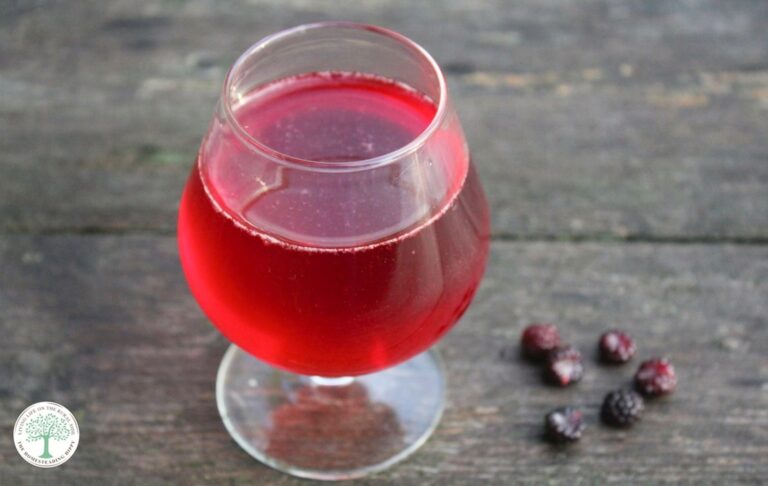
They look like a cross between a raspberry and a blackberry, but they have a taste that’s all their own. They often ripen over a long season, and which can make it difficult to pick enough at any given time for preservation.
A small batch of black raspberry wine only takes a few handfuls for a full flavored summer fruit wine.
Ready to learn how to make your own? I’ll tell you everything you need to know in this post!
What Does Black Raspberry Wine Taste Like?
Black raspberry wine has a deep, rich flavor that is reminiscent of ripe berries.
It is a fruity, sweet wine with hints of chocolate and vanilla. It is full-bodied and has a rich, velvety texture. The flavor of black raspberries is well-balanced with the sweetness of the wine, making it a perfect choice for dessert.
This wine pairs well with chocolate cake, cheesecake, or even ice cream.
Black raspberry wine is also a great choice for sipping on its own. Its complex flavor profile makes it an excellent choice for those who enjoy trying new wines.
Whether you are looking for a dessert wine or a new addition to your wine collection, black raspberry wine is sure to please.
Is Black Raspberry Wine Good for You?
Fans of black raspberry wine will be happy to hear that recent studies suggest that this delicious beverage may have some health benefits.
According to research, black raspberries contain high levels of antioxidants, which can help to protect cells from damage and may even reduce the risk of some chronic diseases.
In addition, black raspberries are a good source of fiber, which is essential for digestive health.
And while all wines contain some sugar, black raspberry wine is relatively low in sugar compared to other types of wine.
So if you’re looking for a guilt-free way to enjoy your favorite fruit, reach for a bottle of black raspberry wine the next time you’re in the mood for a glass.Cheers!
A Few Recipe Notes
Before you take a look at the ingredients and instructions for making black raspberry wine at the bottom of the article, let me clear up a few things in my notes here.
How Much Fruit Do You Need?
The amount of fruit you need to make black raspberry wine will vary depending on the recipe you use.
For instance, some recipes call for two pounds of raspberries per gallon of water, while others may call for four pounds. In my recipe, you’ll use just two cups of raspberries for a mason jar (quart) of wine.
But many people like to make black raspberry wine in bulk, so here are some numbers for you.
In general, you will need between eight and ten pounds of raspberries to make a one-gallon batch of wine.
If you are using fresh raspberries, you will also need to add in a small amount of sugar to help the fermentation process. However, if you are using frozen raspberries, the sugar content will be higher and you may not need to add any additional sugar. Ultimately, the amount of fruit you use to make black raspberry wine is up to you and will depend on your personal preferences.
How Long Does it Take to Make Black Raspberry Wine?
Making wine is a process that takes time and patience, but the results can be well worth the effort.
Black raspberry wine is a fruit wine that is made by fermenting black raspberries. The fermentation process can take four to six weeks, and the wine must then be left to mature for an additional two weeks.
During this time, the flavors will continue to develop, resulting in a richer and more complex finished product. While the entire process may seem daunting at first, it is actually quite simple.
Getting the Moisture Out & The Fermentation Process
When I first started making fruit wines, I’d process just about any fruit I could find through a countertop juicer. The problem is, most home juicers aren’t particularly efficient and most of the flavor and juice stays with the pulp.
This year, I learned a new technique when I made a batch of rhubarb wine that doesn’t require a juicer or press of any sort.
Simply pack the fruit in sugar, and the sugar will draw the juice, flavor and color out of the fruit all on its own. The fruit sits in sugar for somewhere between 12 hours and 3 days to fully extract the juice.
In the case of black raspberries, this is a real bonus because you can harvest a handful per day for 2-3 days and just add them to the sugar mash.
The high sugar concentration helps preserve them while it extracts their juice. For a 1 quart batch micro batch of black raspberry wine, you’ll need 1-2 cups of black raspberries.
Start by picking as many as you can into the bottom of a quart mason jar.
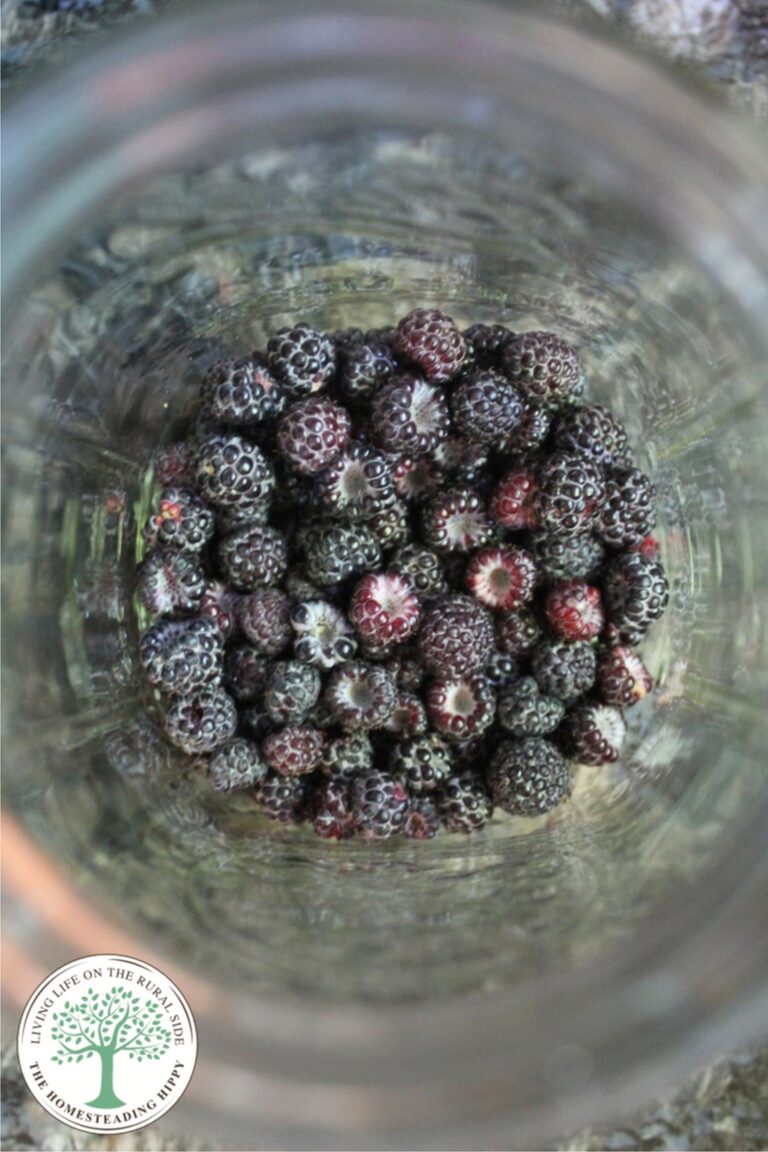
Muddle the berries in with sugar, and continue adding berries if necessary over the next day or two.
A single gallon batch of fruit wine usually requires 2-3 pounds of sugar, and this one quart batch of black raspberry wine calls for 3/4 pound. That’s about 1 1/2 cups of granulated sugar.
With wet fruits, like peaches for a peach wine, the sugar/fruit mash will become liquid almost instantly.
Black raspberries are quite dry, and they’ll form more or less a paste when muddled with the sugar.
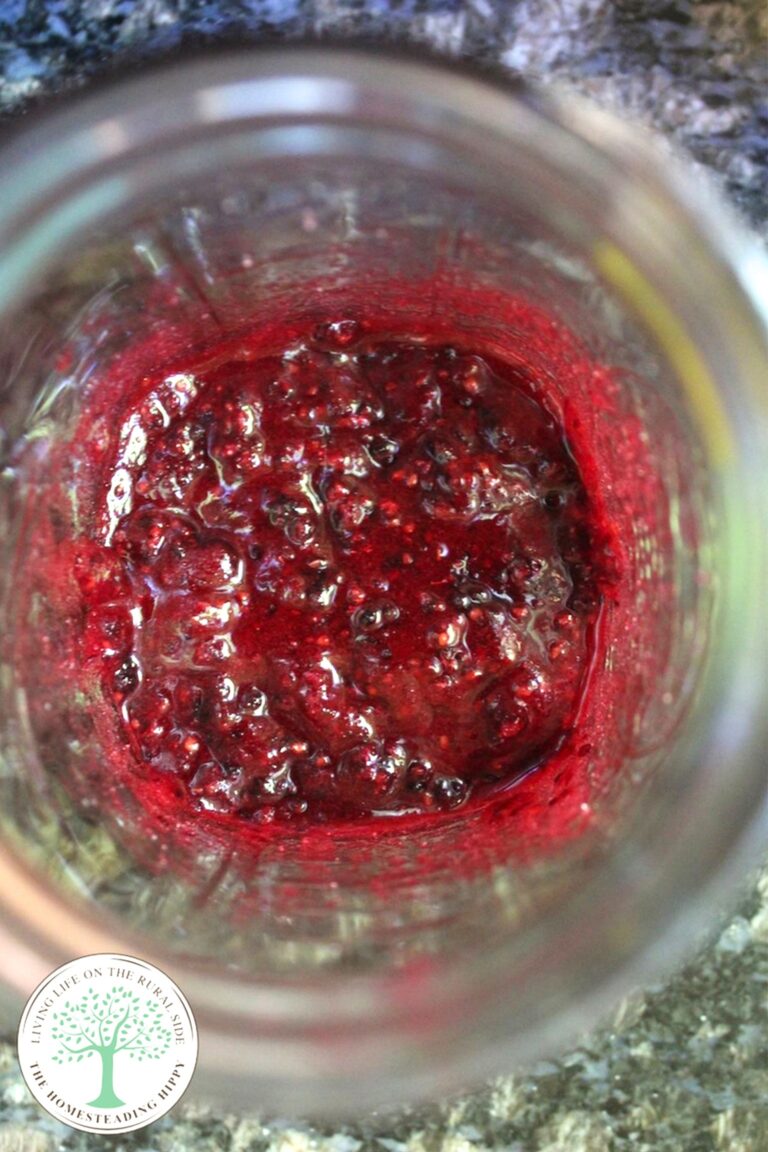
At this point, you have fruit and sugar in a mason jar fermentation vessel. All you need now is an acid source, a tannin source, water and a little yeast. Those can be added right to the jar.
The wine is going to be fermented right in the jar using a mason jar fermentation kit. These kits are more commonly used to make homemade sauerkraut and other fermented vegetables, but they’re also quite convenient for brewing small batch wines and meads.
That means you won’t have to buy any specialized winemaking equipment, and you can use more general purpose fermentation tools to get the job done.
Mason jars are also much easier to clean than a traditional wine fermentation vessel. The wide mouth means you can get a hand in the jar and clean out any remaining fruit pulp or yeast sediment easily.
Choose High Quality Fruit
Making wine is a complex process that requires both patience and attention to detail. One of the most important steps in the winemaking process is choosing high quality fruit.
Black raspberries are a popular choice for wine, but not all raspberries are created equal.
When selecting black raspberries for wine, it is important to look for fruit that is plump and ripened evenly. The raspberries should also be free of blemishes or bruising.
Once you have selected the perfect fruit, the rest of the winemaking process will come naturally.
Cleaning the Flower Petals Out
When you’re making floral wines, like this dandelion wine, the flower petals can be nearly impossible to clean out of a narrow neck fermenter.
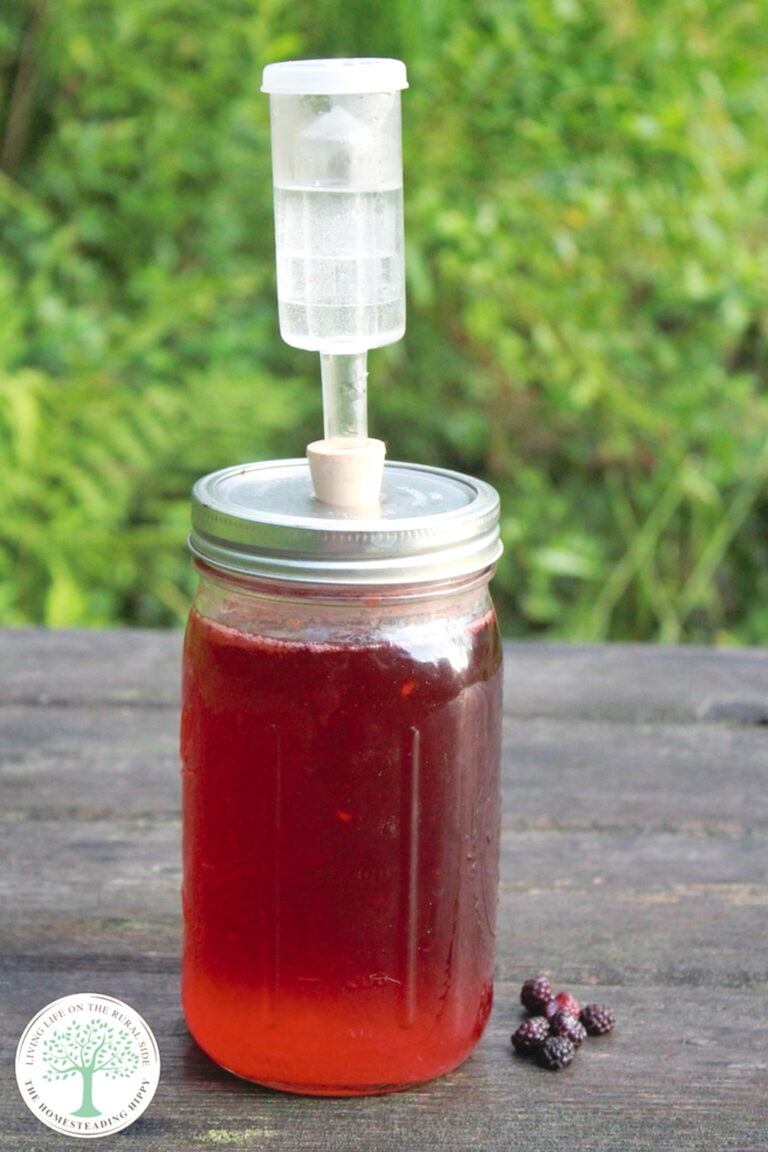
Winemakers often use specialized winemaking additives like acid and tannin powders, to achieve the right balance in a wine.
We’re just making a small batch here, and there’s no reason to buy a whole bottle of something when you’re only going to need a pinch. If you’re planning on getting into brewing in general, go ahead and invest in winemaking additives.
For everyone else, the acid can come from a bit of lemon juice and the tannin comes from either black tea, or the leaves of a currant or grape bush.
Yeast
Yeast, on the other hand, is a different story…
While you can technically use wild yeast or baking yeast, it’s a horrible idea.
Much of the flavor in a wine comes from the yeast and different strains of yeast will produce dramatically different flavors. Bread yeast produces a brew that tastes surprisingly like bread and is often undrinkable.
Much of the flavor in a wine comes from the yeast and different strains of yeast will produce dramatically different flavors.
Bread yeast produces a brew that tastes surprisingly like bread and is often undrinkable.” quote=”much of the flavor in a wine comes from the yeast and different strains of yeast will produce dramatically different flavors.
Bread yeast produces a brew that tastes surprisingly like bread and is often undrinkable.
How to Make Homemade Wine Stronger?
So what if you want to make your own wine that’s even better and stronger? The good news is that it’s surprisingly easy to make homemade wine that’s stronger and more flavorful than anything you can buy at the liquor store.
One way to make your wine stronger is to add more alcohol to it. This may seem like an obvious solution, but it’s actually one of the most effective ways to make your wine taste better.
If you’re making your own wine from scratch, you can increase the alcohol content by adding more sugar during the fermentation process. Just be sure not to add too much sugar, as this can lead to an overly sweet wine.
Another way to make your wine stronger is to age it for a longer period of time. Most commercial wines are meant to be consumed within a year or two of being made, but if you’re patient, you can age your own wine for much longer.
Just be sure to store it in a cool, dark place during the aging process. The longer you wait, the stronger it should be!
Can You Use Frozen Black Raspberries to Make Wine?
If you love the taste of fresh black raspberries, you may be wondering if it’s possible to use frozen berries to make wine.
While fresh berries are always the best choice for making wine, you can technically use frozen berries if you’re in a pinch. The key is to thaw the berries completely before using them, and to crush them gently to avoid breaking the seeds.
Because frozen berries tend to be softer than fresh ones, you may also want to add a little extra sugar to your wine recipe.
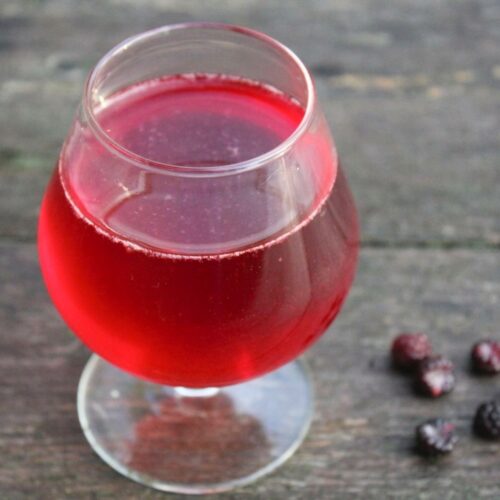
Black Raspberry Wine
Ingredients
- Ingredients:
- 1-2 Cups Black Raspberries
- 1 1/2 Cups Sugar granulated
- 1 Tbsp Lemon Juice
- 2 Tbsp Strongly Brewed Black Tea or 2-3 currant or grape leaves
- Premier Blanc Wine Yeast
- Water Chlorine Free
Instructions
- Add the black raspberries directly into the bottom of a 1 quart wide mouth mason jar.
- Top with sugar, and muddle with a spoon.
- Allow the sugar and fruit to sit for at least 3 hours, or up to 3 days as you add more fruit from a small black raspberry patch.
- Add in lemon juice and a tannin source. The tannin source can either be strongly brewed black tea or a few grape or currant leaves. If you’re using black tea, add the prepared tea (not the tea leaves or tea bag).
- Fill the jar about 2/3 full with water.
- In a separate container, hydrate the wine yeast with a small amount of water.
- Allow the wine yeast to bloom for at least 5 minutes before adding it into the wine mixture. This is important because adding it into the wine before it’s rehydrated can shock the yeast.
- Pour the hydrated yeast into the wine, and then add more water to fill the mason jar to within 1 inch of the top.
- Seal the mason jar with a mason jar fermentation kit, and allow the wine to ferment at room temperature for 4 to 6 weeks. If material bubbles up into the water lock, remove the lid and clean it out and then put it back on.
- After 4 to 6 weeks, all fermentation activity should have stopped. If it’s still occasionally bubbling, give it more time.
- Carefully pour the finished wine into another mason jar, leaving any sediment behind. A fine mesh strainer is helpful for removing any floating fruit.
- Bottle in a simple Grolsch flip top bottle, or simply cap the mason jar with a canning lid and give the wine at least 2 weeks to mature before drinking.
What Else Can You Do With All Those Black Raspberries?
If you find yourself with a bounty of black raspberries – and perhaps are sick of making wine! – there are many delicious things you can do with them besides making wine.
Black raspberries are perfect for pies, cobblers, and jams. They can also be used to make syrup, which is delicious on pancakes or waffles.
Additionally, black raspberries can be added to smoothies or yogurt for a healthy breakfast or snack. And of course, they can always be enjoyed on their own as a healthy and delicious treat.
So if you find yourself with a surplus of black raspberries, don’t worry – there are plenty of delicious ways to use them up.
Final Thoughts
If you’re looking for a wine that is both unique and delicious, consider black raspberry wine. It can be made at home with just a few simple ingredients, and it’s perfect for any occasion.
Give it a try today!
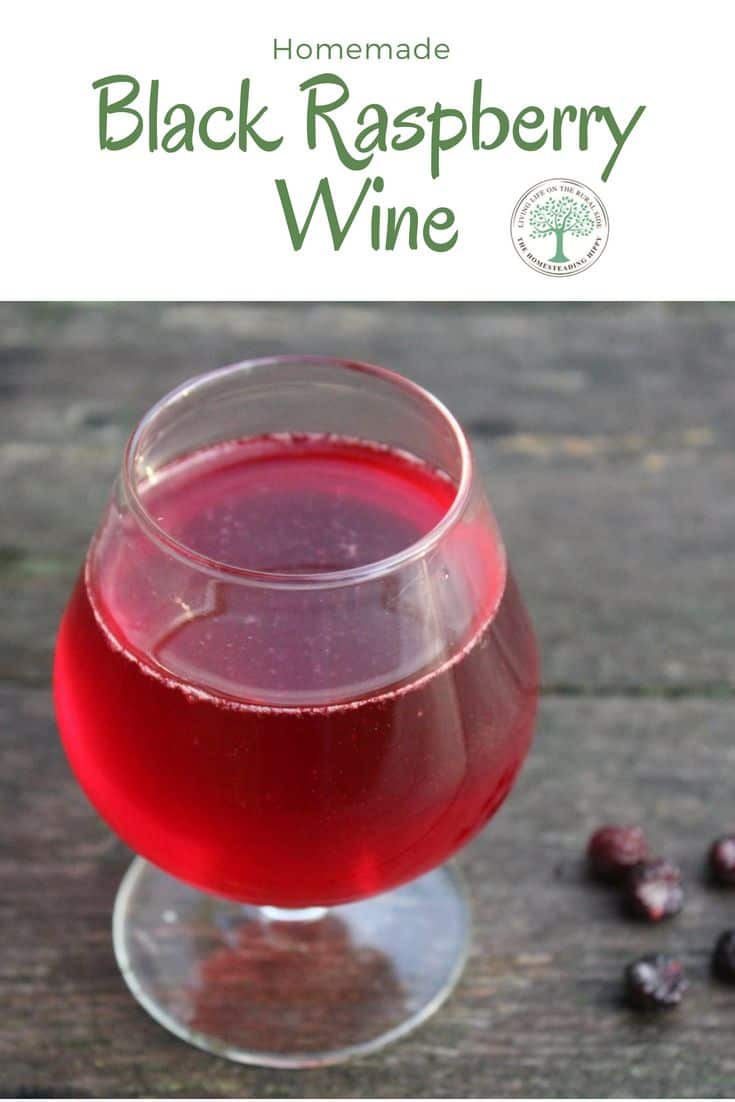
Are you ready to try this easy to make black raspberry wine? Be sure to pin this for later, too!

Ashley is an off grid homesteader in rural Vermont and the author of Practical Self Reliance, a blog that helps people find practical ways to become more self reliant.

Heather’s homesteading journey started in 2006, with baby steps: first, she got a few raised beds, some chickens, and rabbits. Over the years, she amassed a wealth of homesteading knowledge, knowledge that you can find in the articles of this blog.
Learn more about Heather and the rest of the writers on this page.

How much yeast do I use per quart jar?
How much yeast do I use per quart jar?
I’m also wondering how much yeast to use? I feel like a whole packet will be too much :/
Can I double the recipe to half gallon jars? Use a tannin for this recipe? And also how much yeast? Surely you don’t need 2 packets per half gallon.?
Hi Ashley,
There’s no measurement for the amount of yeast to use. I plan to increase the amount I’m making from just a quart to a gallon (We picked a roaster-full of berries today!)
Anyway, will just 1 packet due or how much? By the way, my dandelion wine turned out AWESOME thanks mostly to your recipe! Now I’m making wine out of just about everything! ???
So, after reading another blog post where she made a gallon of wine, she gave instructions on how divide everything into 4 for the quart jars. That recipe called for one packet of yeast. So 1/4 of a packet of the brewer’s yeast for one quart jar
When putting the wine into the Mason jar for 2 more final weeks. . . I sterilized my jars and screwed the lid shut. Was I supposed to boil it like jam to seal it? Leave it slightly loose or tight? Not sure what to do and don’t want to waste all that work and food. Busy with school. Can call or text back if you want. 816-714-4884.
I also question how much of the yeast packet to use in the recipe.
I notice that there has been no response to the other questions but I thought I would try again. Sometimes life happens. 🙂
Connie W
I have a fermentation cover for my gallon jar and it is too big. I used tape to seal as best I could, and to also pull it down to keep it tight. It’s only been 2 day but nothing is going up the vapor lock thingy, but oozing out of the cover…is that ok?